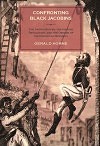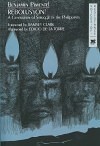Revolutions
Building a New Relationship in Latin America
The major element missing from Latin American politics in recent decades has been, with rare exceptions, the traditional workers’ movement, beaten down by flexibilization, subcontracting, and other neoliberal measures.… The fall of the Berlin Wall and the defeat of Soviet socialism left the parties and social organizations of the left inspired by that model seriously weakened. At the same time, trade unions were hit hard by the weakening of the working class, part of the larger social fragmentation produced by neoliberalism. In that context, it was new social movements, and not the traditional parties and social organizations of the left, that rose to the forefront of the struggle against neoliberalism, in forms that varied widely from one country to another.… The situation in the 1980s and ’90s in Latin America was comparable in some respects to the experience of pre-revolutionary Russia in the early twentieth century.… [M]any of the region’s peoples said “enough” and started mobilizing, first in defensive resistance, then passing to the offensive. As a result, presidential candidates of the left or center-left began to triumph, only to face the following alternative: either embrace the neoliberal model, or advance an alternative project motivated by a logic of solidarity and human development.… [Consequently,] a major debate has emerged over the role that new social movements should adopt in relation to the progressive governments that have inspired hope in many Latin American nations. | more…

The Haitian Revolution, the product of the first successful slave revolt, was truly world-historic in its impact. When Haiti declared independence in 1804, the leading powers—France, Great Britain, and Spain—suffered an ignominious defeat and the New World was remade. The island revolution also had a profound impact on Haiti’s mainland neighbor, the United States. Inspiring the enslaved and partisans of emancipation while striking terror throughout the Southern slaveocracy, it propelled the fledgling nation one step closer to civil war. Gerald Horne’s path breaking new work explores the complex and often fraught relationship between the United States and the island of Hispaniola. Giving particular attention to the responses of African Americans, Horne surveys the reaction in the United States to the revolutionary process in the nation that became Haiti, the splitting of the island in 1844, which led to the formation of the Dominican Republic, and the failed attempt by the United States to annex both in the 1870s. | more…
Meaning, Work, and Crisis
When I walked the thousand-year-old route of the Camino de Santiago in northern Spain in September and October 2014, I expected to discuss questions of health with fellow travelers. I assumed that an ancient pilgrimage would be full of walkers pondering health issues and would provide an ethnographer’s panacea for “getting in.” I was wrong. I was surrounded by walkers from all parts of Europe, but they were pondering the meaning of work, capitalism, and their lives. I found I was seeing a profound crisis of capitalism and individuals struggling with alienated labor as discussed by Karl Marx.… [W]hat I saw on the Camino de Santiago was certainly not a revolutionary movement. Envisioning satisfying work, however, helps change the shared conception of what work is. Raul Zibechi argued that as we struggle both individually or collectively, we engage in an emancipatory process that, as the Zapatista’s Subcomandante Marcos notes, “builds, includes, brings together and remembers whereas the system, separates, splits and fragments.”… Awareness of alienated labor and struggle against crisis, whether individual or collective, does seem to create imaginative space for change even if it does not necessarily reflect what has been thought of as revolutionary struggle. | more…
In the late 1950s, Pete Seeger received a letter from his manager, Howie Richmond, begging him to write a new hit song. … [Richmond] believed that “protest songs” were not marketable. Seeger was angry—he had a new song in mind, with words from a poem that he had set to music, and he believed it was, in a deep and significant sense, a song of protest.…. The song, of course, was “Turn! Turn! Turn! (To Everything There Is a Season),” which continues to be performed and recorded by many artists, and most famously became a huge folk-rock hit for The Byrds. It was as though, despite himself, Seeger produced a hit song, even when commercial popularity was the furthest thing from his mind—an example of how inseparably his songwriting talents and political principles were bound together. | more…
Imagine. A liberation army that supports a generalized revolt of the peasantry reaches the gates of the capital, where the people, in their turn, rise up, drive the royal government from power and welcome as their liberator the Communist Party of Nepal-Maoist (CPN-M), whose effective revolutionary strategy needs no further demonstration. What is involved here is the most radical victorious revolutionary advance of our epoch, and, for this reason, the most promising. | more…

In 1969, Ferdinand Marcos won a second term as president, in one of the dirtiest campaigns in Philippine history. That same year, Edgar Jopson was elected president of the National Union of Students of the Philippines, in a campaign to keep the Communists out of the student movement. Thirteen years later Jopson was gunned down by the military during a raid on an underground safe house. He was by then one of the most wanted people in the country, with a price on his head, a leading Communist Party cadre and member of the urban underground. | more…

